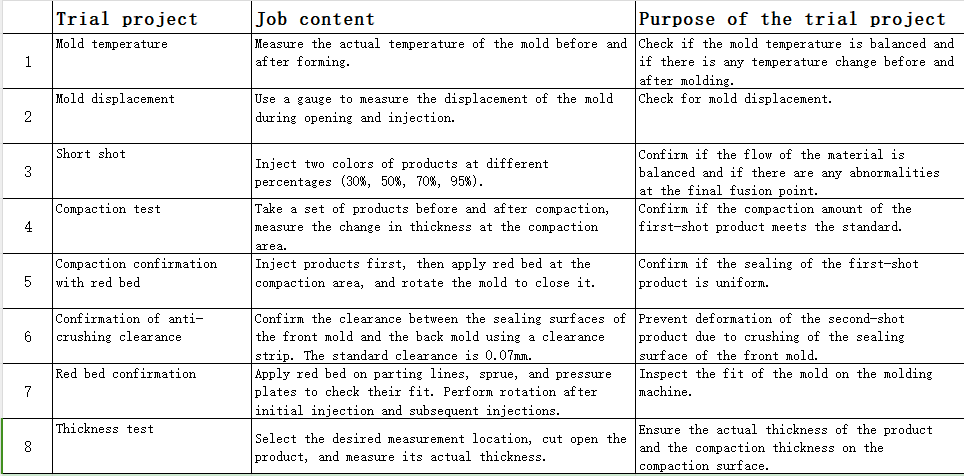Introduction to headlight two-color lampshade technology:
1. Mold aspect:
The characteristic of this product is that the white part is on top and the black part is on the bottom. The normal molding sequence is to mold the black part below first, and then the white part above. This will cause color mixing at the junction of the black and white parts. To solve this problem, it needs to be replaced. Molding sequence: that is, the white parts are molded first, and then the black parts are molded.
For this reason, the mold structure must also change accordingly.
Change point 1: After the white parts are injected, they need to be fixed on the cavity side instead of the core side.
Change point 2: Color change cannot be achieved after the white parts are fixed on the cavity side. The plastic cannot be injected from the cavity, but from the core side, which is the so-called reverse mold.
Change point 3: After the plastic is injected from the core side, the core needs to participate in ejection at the same time, so the ejection power of the core will also change.
The above three changes will bring difficulties to the design and production of molds:
Difficulty 1: In order to ensure that the white parts can be stably fixed on the cavity, some corresponding structures need to be made on the production port and the mold.
Difficulty 2: The length of the hot nozzle when feeding plastic from core is much longer than that of plastic feeding from the cavity. For this reason, the temperature control accuracy of the hot runner is more demanding, and the requirements for the hot runner are higher than those when feeding glue from the front mold.
Difficulty 3: The rear mold needs to be ejected and injected, which makes it more difficult to ensure design and processing accuracy.
2. Product frequently asked questions:
No. | Question | Reason | Improvement |
1. | Product bright line: | The inside and outside of the headlight lampshade need to be hardened and anti-fog coated. During the coating process, cracking often occurs. The cracked part is usually at the junction of black and white parts, and this cracking can only be seen after the molding. Sometimes you can't see it. | Preloading amount, processing technology, polishing technique |
2. | black part air trap | The structure of the two-color headlight lampshade is generally a white piece in the middle and a circle of black pieces around it. When molding the black piece, because the white piece in the middle has no space for exhaust, the black piece can easily trap air. | Mold flow analysis, gate settings, wall thickness analysis, exhaust settings |
3. | Mixed colour | Most headlight lampshades are sealed with side plastic, and front fog lamp shades are mostly sealed with front plastic. Side sealing is more difficult than front sealing, and it is easy to change color during the two-shot molding process. | Processing accuracy and process guarantee |
4. | Indentation/iron powder | Part of the front mold is both the sealing surface of the first shot and the sealing surface of the second shot. If the fit is too tight, indentations or iron powder will be produced, and if the fit is too loose, flash will easily occur. | Standard setting of fit clearance, machining accuracy assurance, measurement and inspection after mold fit is completed, and mold hot fit verification. |
Before molding
 |  |
 |  |
In molding
| Mold offset measurement | Red Bed | Measure actual mold temperature |
 |  |  |
After molding

